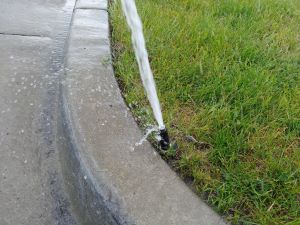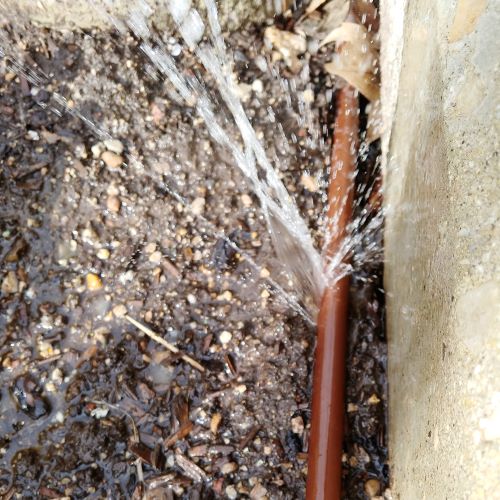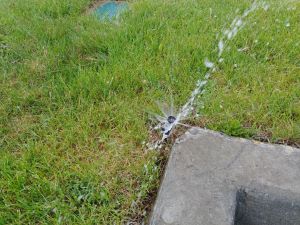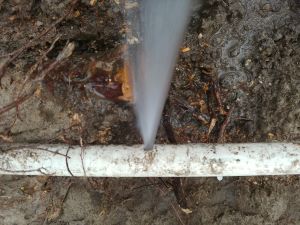
Broken Nozzle

Broken Drip Line

Broken Pop-up

Broken Lateral

Broken Nozzle

Broken Drip Line

Broken Pop-up

Broken Lateral
Testing sprinklers at least once a year is a must. I typically test my system at startup, then again if any problems arise, like localized dry spots. Running a test is simple, and most sprinkler timers have either a test feature or a run manually feature. For example, you can start a Hunter timer by holding down the forward button or in some cases, the button that has a hand symbol. After the sprinklers on that station/zone has been checked you can then advance to the next station/zone by pressing the forward button.
Some of the common things you should be looking for, broken heads, heads out of adjustment, leaks and areas that are not getting water. Other things you might want to ask your self while testing your sprinklers. Are there any areas that are drier than others? How can I make this work better? Is the coverage Adequate for what I need? Are there any soft spots caused from over watering? Am I wasting water somewhere? One way to check the last question is to see how much water is running down the gutter or pooling on concrete.
Turning a valve on by hand is usually very simple. There are often 2 ways to do this on each valve, if not, there is at least 1 way. If you turn the solenoid counter clockwise 1/2 turn, the valve should come on in a matter of seconds. You should be able to hear the water flowing through the pipe before you see it come out of the sprinklers. The second way to turn on valves manually is to turn the bleeder screw counter clock wise 1/2 turn. It is called a bleeder because it allows water to leak out of the screw, this in-turn causes the valve to turn on. To turn them off, simply turn the solenoid or bleeder back to its original position. Be careful not to over tighten, as these have plastic threads and can be damaged easily.
One of the best ways to test that an area is getting adequate water is to poke the ground with a screwdriver. If the screwdriver inserts easily, the area likely has adequate water. If there is a lot of resistance, the area is likely not getting the water it needs.